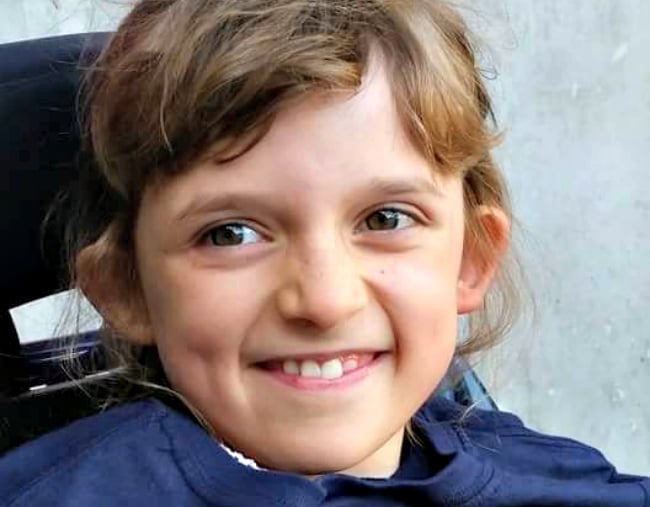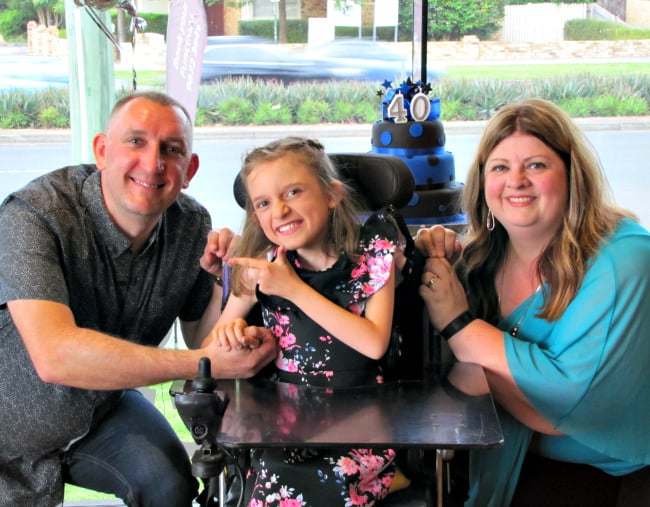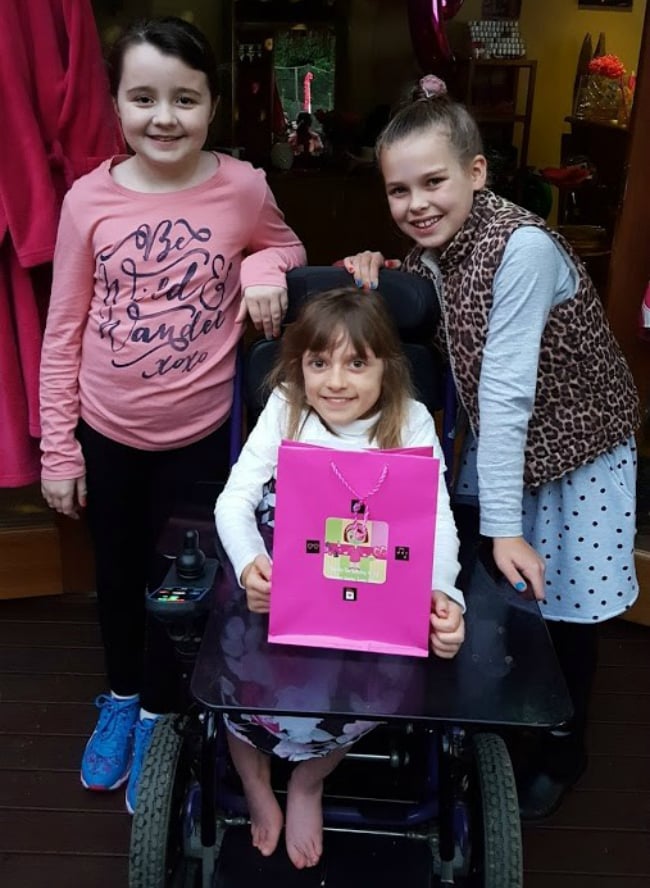
In Australia, more than 319,000 children live with all types of disability. Of those children, 12,000 live with a physical disability. My daughter Chloe, nine, is one of these kids. Chloe lives with a rare genetic condition called spinal muscular atrophy (SMA) type II.
Chloe was diagnosed with SMA type II, on 3 July 2009 when she was only 13-months-old.
SMA is a rare genetic disease and is the most common genetic cause of death in children under two years of age. SMA can cause paralysis and difficulty with the most basic functions of life, like breathing and swallowing.
The different types of SMA are based on age of onset and the physical milestones achieved – ranging from those diagnosed before six months of age who have a life expectancy of under two years, to those diagnosed in adulthood.































































































